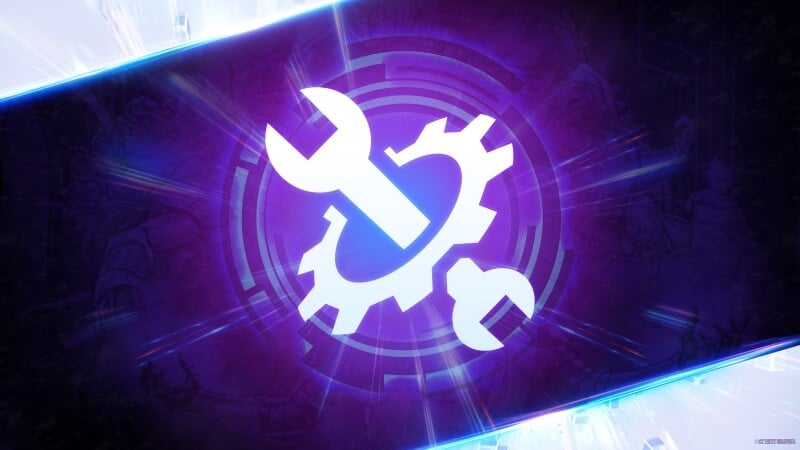Table of Contents
So if you’ve caught my streams on Twitch or followed me on YouTube (yes, yes, shameless plugs, I know), you’re probably already aware that I managed to make it to Rank 100, aka the coveted Infinite rank. I managed the journey over approximately two weeks from first opening the game, and I have some thoughts on the gameplay experience over that time period.
I started writing this article to just get out my general thoughts on the climb, but then I figured out that literally, everything I wanted to say was about Snapping and Retreating. It’s really just that fundamental to doing well at this game. So let’s discuss that, shall we?

Snapping
I kid you not, the single most important skill you need to develop to play this game is snapping. It is this mechanic that will make or break your own attempts to climb the ladder. In later sections were going to discuss when you should and shouldn’t be snapping, but for now I want to look at the in-game consequences of this prominent feature.
A player who utilizes snaps and retreats perfectly can remain neutral on the ladder (no cubes lost or gained), as long as their deck has an 11% winrate. Let that sink in for a moment. That means a single 8-cube win can account for 8 different well-timed retreats. If you’ve ever wanted a game where you can climb the ladder with meme decks, this is the game for you. Your janky combo didn’t come together? Fall back, and give it a try next game. Just make sure you snap before you show your hand to ensure maximum cube earnings when it all comes together.
With that being said, you’re going to see countless posts on Reddit or Twitter flaunting various deck lists that players have used to climb. And while they are certainly significant, it is my opinion that as long as the deck is capable of winning a game, the most telling measure of success is going to be how well you snap, and even more importantly, how well you retreat. So from my limited experience, let’s look at things that were the biggest part of my decisions on my climb.

Know thy enemy
In Marvel Snap, it is important to know what your opponent is playing. Even if you don’t know every single card, knowing the archetype is important. And I think that’s where the bulk of the value from cards like Yondu (146) and Cable (21) come from; you can figure out early what kind of deck your opponent is running, and you can use that information to determine what their upcoming moves are.
For instance, you’re playing against someone who has been obviously setting up a Nova (92)/Carnage (24) play. You need to look at how much power your opponent has on the board, how much you have, and how much they WOULD have if they pull off their combo. Since decks in Marvel Snap are so small, I would advise that you don’t plan on your opponent not having drawn specific cards. Any good deck will have a backup plan (ie Deathlok (34) as a backup to Carnage (24)), so always assume the worst. Last play of the game and you need to know if you can win a zone? Assume your opponent just drew America Chavez (4), and see if you can handle that ten point swing.
Always know what your opponent’s big play is, and always be prepared for it on turn 6. Have they played a lot of On Reveal cards? Prepare for Odin (93). Multiple Man (86)s abounding? Prepare for a Heimdall (55). Always make sure that you can win if they have their big finisher, because it’s a safe assumption that they do.

Let’s not be hasty
I think one of the worst mistakes you can make gameplay-wise is to fill up a zone too early with no means of significantly buffing it. By playing that fourth card, you are advertising to your opponent exactly how much power they would need to commit to that location to earn a victory. Wherever possible, you should always be trying to leave one open space at each location for the start of turn 6, unless you have ways of strengthening a filled location (ie Bishop (13) or Klaw (71)).
If your opponent has filled a spot, then you now have the advantage. You can decide whether you can commit the resources to take that location, or if it’s worth abandoning entirely. Be aware of the archetype your opponent is running, and how much they might be able to buff a closed location. If they are running Nova (92), always be factoring in that 8-point buff.

Playing to be ahead at all 3 locations
This one may be a little bit more subjective, but this is the technique that helped me a lot in my later games. Ignoring what your opponent might play next turn, you want to be winning at all three locations, if at all possible. This means if you’re currently ahead in 2 locations, make your play to take back the third location. Practically, this means that your opponent would need to take back two of the three locations, something that is especially hard to do when they are likely planning that big 6-drop.
If you cannot take the lead in all 3 locations, I would highly recommend retreating. All your opponent would need to do is take a single location back from you to take the win. If they can do that with a combo they’ve yet to unleash, or a single 10-strength America Chavez (4), then you had best be biding your time for another day

When to snap
So you feel like you’re in a good position to win the game, you’re probably going to snap. So when do you do it? Simply put, do it BEFORE you reveal your big play. No point in snapping right after you’ve given the whole board +2 strength or right after you expertly snipe their big boy with Shang-Chi (113). If you want to get the most out of your wins (and you do!), then you want to bring them into the higher-stakes game before they know any better.

How have you all found the ladder? Do you agree with my assessment of the snap mechanic? Any more tips around snapping that you think everyone should know? Let’s chat in the comments, there is always room for new theories, new ideas, and self-improvement
Offbeat is a Canadian caster / streamer / content creator / everything else under the sun. He has many more hours in Hearthstone that he would like to admit, and streams weekends on Twitch. He has a YouTube and Twitter page too, if you care about those.

























































